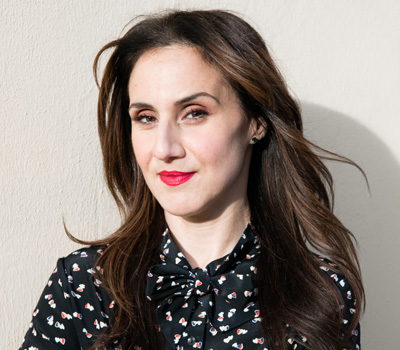Native New Yorker Francesca Maniace worked at a number of restaurants in the city—Tasting Room, Market Table, Balthazar—before landing her first sommelier position at Marea. She then went to Napa Valley to work harvest with Dan Petroski at Larkmead falling in love with the place enough to trick her husband (her words) into moving to California. She worked for Shelly Lindgren at San Francisco’s A16, then ran the wine program at Commonwealth for about five years. Last year she moved to the new taverna-style Che Fico where she assembled a tightly-edited, 120-bottle list of wines from Italy and California.


What prompted you to make the move to Che Fico?
I used to live across the street [from the space where Che Fico eventually opened]. I heard that an Italian restaurant was opening there and I told my husband I wanted that list, but it took years for the place to open. I left Commonwealth after five years without a specific plan, but I had all this Italian wine knowledge from Marea and some other Italian focused lists. I woke up one morning to find the job posting for wine director at Che Fico, and immediately said: “This is my job!” I got chef David’s number and sent my resume directly to him instead of through the job posting site.
You have some California wines on your list, yet your top ten is all Italian. What accounts for that?
When we started talking about the list, we decided we’re an Italian restaurant but we’re in California, so we should have some California wines. But, there aren’t as many people in California drinking domestic wines as I thought. A lot of people bring in their own bottles if they want California wines, so they’re not asking for domestic wines as much. There are also some really strong Italian lists at other San Francisco restaurants, like Gianpaolo Paterlini’s at Acquerello and Shelly Lindgren’s southern Italian list at A16. I give them credit for paving the way for people to be comfortable asking for Italian wines. When I go to a table, I ask straight-up if they’d like something domestic or Italian, and more often than not they say, ‘I’m eating Italian food, let’s try something Italian.’ I also often will hear, ‘I don’t know a whole lot about Italian wines, can you help me out?’
The California wines that we started out with will always be there, like a Giornata Luna Matta Vineyard nebbiolo from Paso Robles (which is beautiful), and wines from Dan Petroski and Matthiasson.
Your biggest success was that Montepeloso 2014 Toscana A Quo ($62), a blend of Montepulciano, cabernet sauvignon, sangiovese, marselan and alicante. What drove sales of that wine?
It is the crowd pleaser. That wine is easy to say, it’s from somewhere people know, has grapes people recognize, is full-bodied and is at a good price point. It’s a gateway drug for California wine drinkers. Not everyone wants to sit around and talk about soils—surprise! The fruit character and price point of this wine make people happy. It’s a delicious wine.
It’s not hard to ripen grapes in the Maremma, but to get that freshness is more of a challenge. Our kitchen wants the best produce for their menu, and I want the best producers who take care in the vineyard and with their winemaking techniques. Montepeloso checks all those boxes. It might not be what I would order, but it makes people happy.
Almost all of your top ten wines are based on native Italian varieties. How do customers respond to seeing those names and varieties?
Some people will ask for Chianti, but most are asking for things by the grape. We opened with the Poggerino [Chianti Classico] and it flew, even with the 2014 vintage which wasn’t the greatest. If I put ciliegiolo on the list that would be a hand sell, but other [Italian wines] are more known. I thought the [Ronchi 2015] Barbaresco might be too expensive at $18 a glass, but I can’t keep it in stock. Except for Montepeloso [which includes some French varieties], I don’t have any Super Tuscans on the list—there’s only so much space. I find pure sangiovese more compelling than those types of wines.
For me, wine is more emotional than technical, and it’s not a spitting contest to see how many points you can have on your list. I’d rather have a lot of great wines to sell at $50 to $60.
photo by Molly DeCoudreaux
is the Italian wine editor at Wine & Spirits magazine.
















